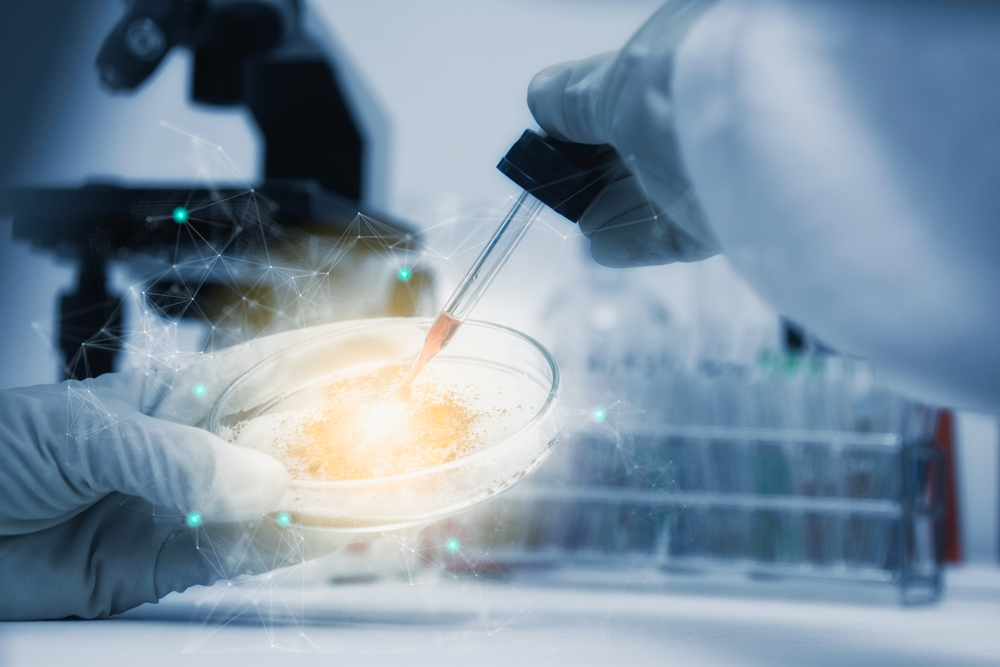Patient-derived Nerve Cells May Help Advance Pompe Research
Written by |

Newly developed nerve cells derived from patients could be used as a model to study neurological involvement in Pompe disease and test potential therapies, a study reports.
Notably, data from these models suggested that a combination of two molecules, which was previously shown to have beneficial effects in models of other lysosomal storage disorders, should be further evaluated as a potential treatment for Pompe disease.
The study, “Modeling CNS Involvement in Pompe Disease Using Neural Stem Cells Generated from Patient-Derived Induced Pluripotent Stem Cells,” was published in the journal Cells and conducted at the National Institutes of Health.
Pompe disease is a lysosomal storage disorder caused by a deficiency in the acid alpha-glucosidase (GAA) enzyme due to mutations in the GAA gene. GAA breaks down glycogen — a large sugar molecule used for energy storage — within small recycling structures called lysosomes inside cells.
GAA deficiency leads to the toxic buildup of glycogen inside lysosomes of several tissues, including cardiac, skeletal, and respiratory muscles, as well as the central nervous system (CNS, which comprises the brain and spinal cord).
“While detailed brain [damage] and its relevance to clinical symptoms are not yet fully understood, recent studies indicate that neuronal abnormalities also contribute to muscle weakness [in Pompe patients],” the researchers wrote.
Preclinical models of the disease are therefore key to gain further insight on its underlying mechanisms and identify potential therapeutic targets and approaches.
Since available mouse models of Pompe cannot fully recapitulate (or mimic) the disorders’ clinical features, patient-derived cellular models based on induced pluripotent stem cells (iPSCs) may help fill this gap.
iPSCs are generated from fully matured cells that are reprogrammed back to a stem-cell-like state, where they can give rise to nearly every type of human cell. As such, they can be genetically modified to carry known disease-causing mutations or derived directly from patients to be used as cellular models of a disease.
In the study, scientists generated neural stem cells — the precursors of cells in the brain — from iPSCs of three Pompe disease patients carrying the R854X mutation in the GAA gene and one healthy donor (to serve as a control).
Characterization of these neural stem cells showed that those derived from people with Pompe disease had no GAA enzymatic activity and displayed significantly greater glycogen accumulation, enlarged lysosomes, and secondary build-up of fatty molecules, compared with control cells.
As a proof-of-concept, the team evaluated the effects of treating the cells with a lab-made GAA — obtained after infusions of Lumyzime (alglucosidase alfa), an enzyme replacement therapy — delta-tocopherol, and hydroxypropyl-beta-cyclodextrin (HPβCD).
Delta-tocopherol and HPβCD are two structurally distinct small molecules previously shown to lessen disease features in cellular and animal models of lysosomal storage diseases.
Their benefits are thought to be associated with changes in lysosomal processes and prevention of fatty molecule accumulation. Combining the two was found to produce greater therapeutic effects in these models.
Results showed that the lab-made GAA significantly increased enzymatic activity and lessened both glycogen build-up and lysosome enlargement in patient-derived neural stem cells. However, no effect was seen on secondary accumulation of fatty molecules.
Treating these cells with delta-tocopherol led to a significant drop in the levels of fatty molecules, but did not affect lysosome size. Notably, combining it with HPβCD significantly reduced glycogen accumulation, lysosomal abnormal size, and fatty molecule levels.
These findings highlighted that “patient-derived Pompe neural stem cells could be used as a model to study disease [mechanisms], to evaluate drug efficacy, and to screen compounds for drug discovery in the context of correcting CNS defects,” the researchers wrote.
In addition, the data suggest that the therapeutic effects of combining delta-tocopherol and HPβCD “should be further studied,” and that future research “may help to expand the application of this combination and identify new targets to treat lysosomal storage diseases,” the team added.
Future studies analyzing neural stem cells generated from Pompe patients with different mutations, and also functional changes in these cells may help clarify and extend the application of this type of model, the researchers said.





